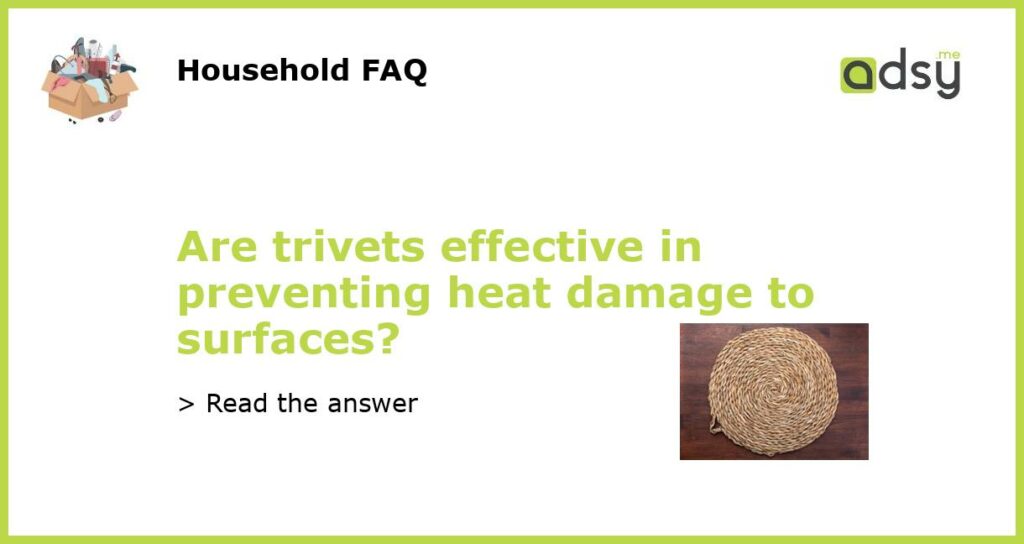Trivets: A Must-Have Item for Heat Damage Prevention
When it comes to preventing heat damage on surfaces, one essential tool to have in your kitchen arsenal is a trivet. These versatile and practical items serve as a protective barrier between hot pots, pans, and dishes and your delicate countertops, tables, or other surfaces. But are trivets really effective in preventing heat damage? Let’s explore the benefits and drawbacks of using trivets and why they should be a staple in every kitchen.
How Do Trivets Work?
Trivets are designed to keep hot cookware elevated, providing an insulated surface that prevents direct contact between the hot object and your countertop or table. They come in various materials such as metal, wood, silicone, and cork, each offering different levels of heat insulation and protection. The raised design of trivets ensures that heat is dissipated evenly, preventing localized heat damage that can occur when hot objects are placed directly on surfaces.
Preventing Heat Damage
The primary function of trivets is to prevent heat damage to surfaces. When you place a hot pot or pan on a trivet, the heat is distributed evenly, reducing the risk of discoloration and burn marks that can occur when hot objects are in direct contact with surfaces. Additionally, trivets protect delicate surfaces, such as wood or marble, from the potential damage caused by the extreme temperatures of hot cookware. By using a trivet, you can ensure that your surfaces stay in pristine condition, preserving their beauty and preventing costly repairs or replacements.
Additional Benefits of Trivets
Aside from their heat protection qualities, trivets offer several additional benefits in the kitchen. They provide stability for cookware, preventing pots and pans from sliding or tipping over. This added stability can be particularly useful when working with heavy or oversized cookware, reducing the risk of accidents and spills. Trivets also act as a decorative element, adding style and personality to your kitchen decor. Whether you opt for a sleek metal trivet or a charmingly rustic wooden one, trivets can enhance the overall aesthetic of your kitchen.
Choosing the Right Trivet
When selecting a trivet, it’s important to consider the material and design that best suits your needs. Metal trivets are highly durable and can handle high heat, making them ideal for everyday use. Wood trivets offer a more natural and rustic look but may require regular maintenance such as oiling to preserve their appearance. Silicone trivets are heat-resistant and easy to clean, making them a convenient option for busy households. Cork trivets are lightweight and provide excellent insulation, but they may not be as durable as other materials. Ultimately, the ideal trivet will depend on your individual preferences and the specific needs of your kitchen.
In conclusion, trivets are highly effective in preventing heat damage to surfaces. Their insulated design and elevated surface protect delicate countertops, tables, and other surfaces from direct contact with hot cookware. In addition to heat protection, trivets provide stability for cookware and add a decorative touch to your kitchen. By choosing the right trivet material and design, you can ensure that your surfaces remain undamaged and beautiful for years to come. So if you haven’t already, consider adding a trivet to your kitchen essentials.






